 Growth in the eurozone has slowed. The European Central Bank (ECB) now expects it to be 1.1% this year; in December, it had forecast a rate of 1.7% for 2019. Mario Draghi, president of the ECB, in his press conference, said that ‘the weakening in economic data points to a sizeable moderation in the pace of the economic expansion that will extend into the current year’. Faced with a slowing eurozone economy, the ECB has announced further measures to stimulate economic growth.
Growth in the eurozone has slowed. The European Central Bank (ECB) now expects it to be 1.1% this year; in December, it had forecast a rate of 1.7% for 2019. Mario Draghi, president of the ECB, in his press conference, said that ‘the weakening in economic data points to a sizeable moderation in the pace of the economic expansion that will extend into the current year’. Faced with a slowing eurozone economy, the ECB has announced further measures to stimulate economic growth.
First it has indicated that interest rates will not rise until next year at the earliest ‘and in any case for as long as necessary to ensure the continued sustained convergence of inflation to levels that are below, but close to, 2% over the medium term’. The ECB currently expects HIPC inflation to be 1.2% in 2019. It was expected to raise interest rates later this year – probably by the end of the summer. The ECB’s main refinancing interest rate, at which it provides liquidity to banks, has been zero since March 2016, and so there was no scope for lowering it.
 Second, although quantitative easing (the asset purchase programme) is coming to an end, there will be no ‘quantitative tightening’. Instead, the ECB will purchase additional assets to replace any assets that mature, thereby leaving the stock of assets held the same. This would continue ‘for an extended period of time past the date when we start raising the key ECB interest rates, and in any case for as long as necessary to maintain favourable liquidity conditions and an ample degree of monetary accommodation’.
Second, although quantitative easing (the asset purchase programme) is coming to an end, there will be no ‘quantitative tightening’. Instead, the ECB will purchase additional assets to replace any assets that mature, thereby leaving the stock of assets held the same. This would continue ‘for an extended period of time past the date when we start raising the key ECB interest rates, and in any case for as long as necessary to maintain favourable liquidity conditions and an ample degree of monetary accommodation’.
Third, the ECB is launching a new series of ‘quarterly targeted longer-term refinancing operations (TLTRO-III), starting in September 2019 and ending in March 2021, each with a maturity of two years’. These are low-interest loans to banks in the eurozone for use for specific lending to businesses and households (other than for mortgages) at below-market rates. Banks will be able to borrow up to 30% of their eligible assets (yet to be fully defined). These, as their acronym suggests, are the third round of such loans. The second round was relatively successful. As the Barron’s article linked below states:
Banks boosted their long-term borrowing from the ECB by 70% over the course of the program, although they did not manage to increase their holdings of business loans until after TLTRO II had finished disbursing funds in March 2017.
Whether these measures will be enough to raise growth rates in the eurozone depends on a range of external factors affecting aggregate demand. Draghi identified three factors which could have a negative effect.
- Brexit. The forecasts assume an orderly Brexit in accordance with the withdrawal deal agreed between the European Commission and the UK government. With the House of Commons having rejected this deal twice, even though it has agreed that there should not be a ‘no-deal Brexit’, this might happen as it is the legal default position. This could have a negative effect on the eurozone economy (as well as a significant one on the UK economy). Even an extension of Article 50 could create uncertainty, which would also have a negative effect
- Trade wars. If President Trump persists with his protectionist policy, this will have a negative effect on growth in the eurozone and elsewhere.
- China. Chinese growth has slowed and this dampens global growth. What is more, China is a major trading partner of the eurozone countries and hence slowing Chinese growth impacts on the eurozone through the international trade multiplier. The ECB has taken this into account, but if Chinese growth slows more than anticipated, this will further push down eurozone growth.
Then there are internal uncertainties in the eurozone, such as the political and economic uncertainty in Italy, which in December 2018 entered a recession (2 quarters of negative economic growth). Its budget deficit is rising and this is creating conflict with the European Commission. Also, there are likely to be growing tensions within Italy as the government raises taxes.
Faced with these and other uncertainties, the measures announced by Mario Draghi may turn out not to be enough. Perhaps in a few months’ there may have to be a further round of quantitative easing.
Articles
- ECB statement following policy meeting
Reuters, Larry King (7/3/19)
- European Central Bank acts to boost struggling eurozone
BBC News, Andrew Walker (7/3/19)
- The European Central Bank Tries to Avoid Repeating Past Mistakes
Barron’s, Matthew C. Klein (8/3/19)
- ECB pushes back rate hike plans, announces fresh funding for banks
CNBC, Silvia Amaro (7/3/19)
- Why the ECB Followed the Fed’s Flip-Flopping
Bloomberg, Mohamed A. El-Erian (7/3/19)
- Central Banks Don’t Have the Answer and Markets Know It
Bloomberg, Robert Burgess (7/3/19)
- Missing out on monetary normalisation
OMFIF, David Marsh (12/4/19)
- The ECB is attempting to get ahead of event
Financial Times, The editorial board (8/3/19)
- Explainer: What is the fuss about European Central Bank TLTRO loans?
Reuters, Balazs Koranyi (4/3/19)
Videos
ECB publications
Questions
- Investigate the history of quantitative easing and its use by the Fed, the Bank of England and the ECB. What is the current position of the three central banks on ‘quantitative tightening’, whereby central banks sell some of the stock of assets they have purchased during the process of quantitative easing or not replace them when they mature?
- What are TLTROs and what use of them has been made by the ECB? Do they involve the creation of new money?
- What will determine the success of the proposed TLTRO III scheme?
- If the remit of central banks is to keep inflation on target, which in the ECB’s case means below 2% HIPC inflation but close to it over the medium term, why do people talk about central banks using monetary policy to revive a flagging economy?
- What is ‘forward guidance’ by central banks and what determines its affect on aggregate demand?
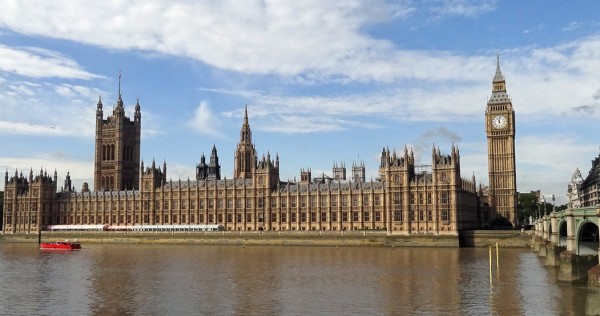 The last two weeks have been quite busy for macroeconomists, HM Treasury staff and statisticians in the UK. The Chancellor of the Exchequer, Mr Phillip Hammond, delivered his (fairly upbeat) Spring Budget Statement on 13 March, highlighting among other things the ‘stellar performance’ of UK labour markets. According to a Treasury Press Release:
The last two weeks have been quite busy for macroeconomists, HM Treasury staff and statisticians in the UK. The Chancellor of the Exchequer, Mr Phillip Hammond, delivered his (fairly upbeat) Spring Budget Statement on 13 March, highlighting among other things the ‘stellar performance’ of UK labour markets. According to a Treasury Press Release:
Employment has increased by 3 million since 2010, which is the equivalent of 1,000 people finding work every day. The unemployment rate is close to a 40-year low. There is also a joint record number of women in work – 15.1 million. The OBR predict there will be over 500,000 more people in work by 2022.
To put these figures in perspective, according to recent ONS estimates, in January 2018 the rate of UK unemployment was 4.3 per cent – down from 4.4 per cent in December 2017. This is the lowest it has been since 1975. This is of course good news: a thriving labour market is a prerequisite for a healthy economy and a good sign that the UK is on track to full recovery from its 2008 woes.
The Bank of England welcomed the news with a mixture of optimism and relief, and signalled that the time for the next interest rate hike is nigh: most likely at the next MPC meeting in May.
But what is the practical implication of all this for UK consumers and workers?

For workers it means it’s a ‘sellers’ market’: as more people get into employment, it becomes increasingly difficult for certain sectors to fill new vacancies. This is pushing nominal wages up. Indeed, UK wages increased on average by 2.6 per cent year-to-year.
In real terms, however, wage growth has not been high enough to outpace inflation: real wages have fallen by 0.2 per cent compared to last year. Britain has received a pay rise, but not high enough to compensate for rising prices. To quote Matt Hughes, a senior ONS statistician:
Employment and unemployment levels were both up on the quarter, with the employment rate returning to its joint highest ever. ‘Economically inactive’ people — those who are neither working nor looking for a job — fell by their largest amount in almost five and a half years, however. Total earnings growth continues to nudge upwards in cash terms. However, earnings are still failing to outpace inflation.
An increase in interest rates is likely to put further pressure on indebted households. Even more so as it coincides with the end of the five-year grace period since the launch of the 2013 Help-to-Buy scheme, which means that many new homeowners who come to the end of their five year fixed rate deals, will soon find themselves paying more for their mortgage, while also starting to pay interest on their Help-to-buy government loan.
Will wages grow fast enough in 2018 to outpace inflation (and despite Brexit, which is now only 12 months away)? We shall see.
Articles
Data, Reports and Analysis
Questions
- What is monetary policy, and how is it used to fine tune the economy?
- What is the effect of an increase in interest rates on aggregate demand?
- How optimistic (or pessimistic) are you about the UK’s economic outlook in 2018? Explain your reasoning.
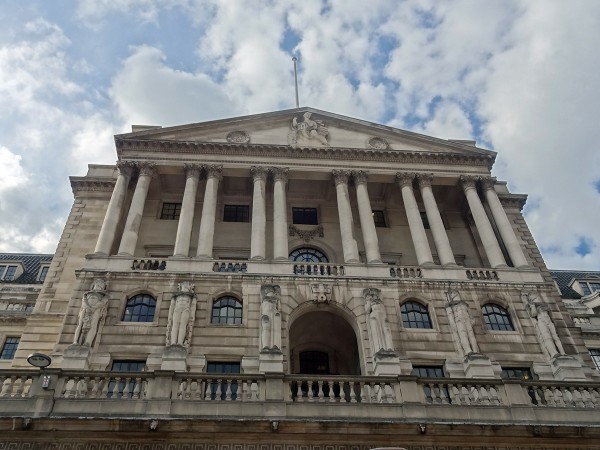 On 2 November, the Bank of England raised Bank rate from 0.25% to 0.5% – the first rise since July 2007. But was now the right time to raise interest rates? Seven of the nine-person Monetary Policy Committee voted to do so; two voted to keep Bank Rate at 0.25%.
On 2 November, the Bank of England raised Bank rate from 0.25% to 0.5% – the first rise since July 2007. But was now the right time to raise interest rates? Seven of the nine-person Monetary Policy Committee voted to do so; two voted to keep Bank Rate at 0.25%.
Raising the rate, on first sight, may seem a surprising decision as growth remains sluggish. Indeed, the two MPC members who voted against the rise argued that wage growth was too weak to justify the rise. Also, inflation is likely to fall as the effects of the Brexit-vote-induced depreciation of sterling on prices feeds through the economy. In other words, prices are likely to settle at the new higher levels but will not carry on rising – at least not at the same rate.
So why did the other seven members vote to raise Bank Rate. There are three main arguments:
|
|
| • |
Inflation, at 3%, is above the target of 2% and is likely to stay above the target if interest rates are not raised. |
| • |
There is little spare capacity in the economy, with low unemployment. There is no shortage of aggregate demand relative to output. |
| • |
With productivity growth being negligible and persistently below that before the financial crisis, aggregate demand, although growing slower than in the past, is growing excessively relative to the growth in aggregate supply. |
As the Governor stated at the press conference:
In many respects, the decision today is straightforward: with inflation high, slack disappearing, and the economy growing at rates above its speed limit, inflation is unlikely to return to the 2% target without some increase in interest rates.
But, of course, the MPC’s forecasts may turn out to be incorrect. Many things are hard to predict. These include: the outcomes of the Brexit negotiations; consumer and business confidence and their effects on consumption and investment; levels of growth in other countries and their effects on UK exports; and the effects of the higher interest rates on saving and borrowing and hence on aggregate demand.
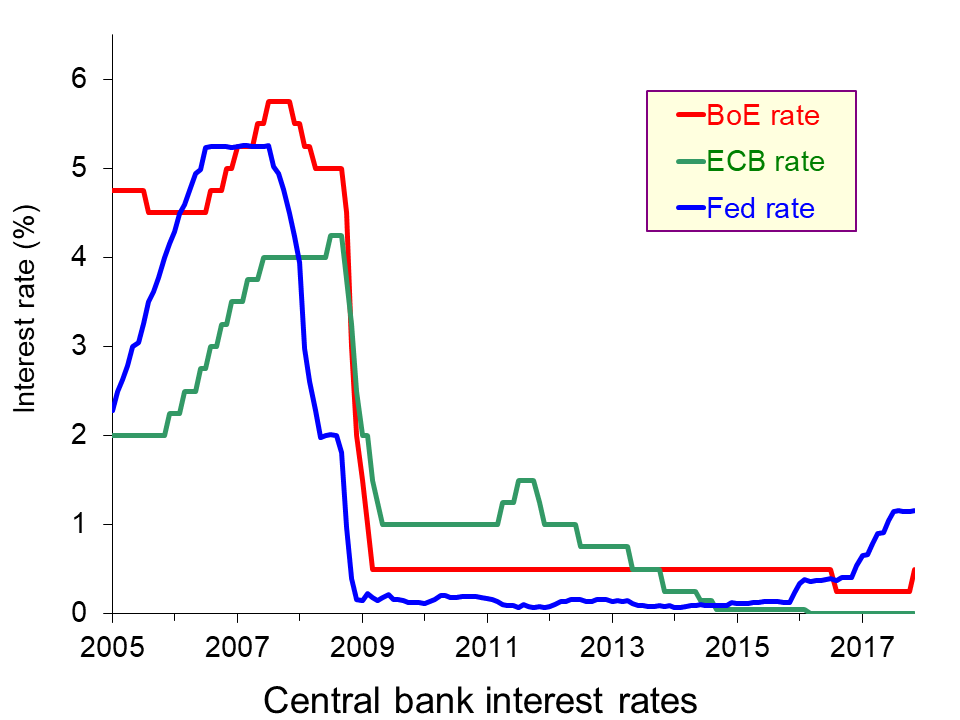 The Bank of England is well aware of these uncertainties. Although it plans two more rises in the coming months and then Bank Rate remaining at 1% for some time, this is based on its current assessment of the outlook for the economy. If circumstances change, the Bank will adjust the timing and total amount of future interest rate changes.
The Bank of England is well aware of these uncertainties. Although it plans two more rises in the coming months and then Bank Rate remaining at 1% for some time, this is based on its current assessment of the outlook for the economy. If circumstances change, the Bank will adjust the timing and total amount of future interest rate changes.
There are, however, dangers in the rise in interest rates. Household debt is at very high levels and, although the cost of servicing these debts is relatively low, even a rise in interest rates of just 0.25 percentage points can represent a large percentage increase. For example, a rise in a typical variable mortgage interest rate from 4.25% to 4.5% represents a 5.9% increase. Any resulting decline in consumer spending could dent business confidence and reduce investment.
Nevertheless, the Bank estimates that the effect of higher mortgage rates is likely to be small, given that some 60% of mortgages are at fixed rates. However, people need to refinance such rates every two or three years and may also worry about the rises to come promised by the Bank.
Articles
Bank of England deputy says interest rate rise means pain for households and more hikes could be in store Independent, Ben Chapman (3/11/17)
UK interest rates: Bank of England shrugs off Brexit nerves to launch first hike in over a decade Independent, Ben Chu (2/11/17)
 Bank of England takes slow lane after first rate hike since Reuters, David Milliken, William Schomberg and Julian Satterthwaite (2/11/17)
Bank of England takes slow lane after first rate hike since Reuters, David Milliken, William Schomberg and Julian Satterthwaite (2/11/17)
First UK rate rise in a decade will be a slow burn Financial Times, Gemma Tetlow (2/11/17)
The Bank of England’s Rate Rise Could Spook Britain’s Economy Bloomberg, Fergal O’Brien and Brian Swint (3/11/17)
 Bank of England hikes rates for the first time in a decade CNBC, Sam Meredith (2/11/17)
Bank of England hikes rates for the first time in a decade CNBC, Sam Meredith (2/11/17)
Interest rates rise in Britain for the first time in a decade The Economist (2/11/17)
Bank of England publications
 Bank of England Inflation Report Press Conference, Opening Remarks Financial Times on YouTube, Mark Carney (2/11/17)
Bank of England Inflation Report Press Conference, Opening Remarks Financial Times on YouTube, Mark Carney (2/11/17)
Bank of England Inflation Report Press Conference, Opening Remarks Bank of England, Mark Carney (2/11/17)
 Inflation Report Press Conference (full) Bank of England on YouTube (2/11/17)
Inflation Report Press Conference (full) Bank of England on YouTube (2/11/17)
Inflation Report Bank of England (November 2017)
Monetary Policy Summary and minutes of the Monetary Policy Committee meeting ending on 1 November 2017 Bank of England (2/11/17)
Questions
- Why did the majority of MPC members feel that now was the right time to raise interest rates whereas a month ago was the wrong time?
- Why did the exchange rate fall when the announcement was made?
- How does a monetary policy of targeting the rate of inflation affect the balance between aggregate demand and aggregate supply?
- Can monetary policy affect potential output, or only actual output?
- If recent forecasts have downgraded productivity growth and hence long-term economic growth, does this support the argument for raising interest rates or does it suggest that monetary policy should be more expansionary?
- Why does the MPC effectively target inflation in the future (typically in 24 months’ time) rather than inflation today? Note that Mark Carney at the press conference said, “… it isn’t so much where inflation is now, but where it’s going that concerns us.”
- To what extent can the Bank of England’s monetary policy be described as ‘discretionary’?
 With the effects of the depreciation of sterling feeding through into higher prices, so the rate of inflation has risen. The latest figures from the ONS show that in the year to April 2017, CPI inflation was 2.7% – up from 2.3% in the year to March. The largest contributors to higher prices were transport costs and housing and household services.
With the effects of the depreciation of sterling feeding through into higher prices, so the rate of inflation has risen. The latest figures from the ONS show that in the year to April 2017, CPI inflation was 2.7% – up from 2.3% in the year to March. The largest contributors to higher prices were transport costs and housing and household services.
But wage increases are not keeping up with price increases. In 2017 Q1, the average annual growth rate in regular pay (i.e. excluding bonuses) was 2.1%. In other words, real pay is falling. And this is despite the fact that the unemployment rate, at 4.6%, is the lowest since 1975.
The fall in real wages is likely to act as a brake on consumption and the resulting dampening of aggregate demand could result in lower economic growth. On the other hand, the more buoyant world economy, plus the lower sterling exchange rate is helping to boost exports and investment and this could go some way to offsetting the effects on consumption. As Mark Carney stated in his introductory remarks to the May 2017 Bank of England Inflation Report:
The combination of the stronger global outlook and sterling’s past depreciation is likely to support UK net trade. And together with somewhat lower uncertainty, stronger global growth is also likely to encourage investment as exporters renew and increase capacity.
According to the Bank of England, the net effect will be modest economic growth, despite the fall in real wages.
In the MPC’s central forecast, quarterly growth is forecast to stabilise around its current rate, resulting in growth of 1.9% in 2017 and around 1¾% in each of the next two years.
 But forecasting is dependent on a range of assumptions, not least of which are assumptions about consumer and business expectations. These, in turn, depend on a whole range of factors, such as the outcome of the UK election, the Brexit negotiations, commodity prices, world growth rates and international events, such as the actions of Donald Trump. Because of the uncertainty surrounding forecasts, the Bank of England uses fan charts. In the two fan charts illustrated below (from the May 2017 Inflation Report), the bands on constructed on the following assumptions:
But forecasting is dependent on a range of assumptions, not least of which are assumptions about consumer and business expectations. These, in turn, depend on a whole range of factors, such as the outcome of the UK election, the Brexit negotiations, commodity prices, world growth rates and international events, such as the actions of Donald Trump. Because of the uncertainty surrounding forecasts, the Bank of England uses fan charts. In the two fan charts illustrated below (from the May 2017 Inflation Report), the bands on constructed on the following assumptions:
If economic circumstances identical to today’s were to prevail on 100 occasions, the MPC’s best collective judgement is that CPI inflation or the mature estimate of GDP growth would lie within the darkest central band on only 30 of those occasions and within each pair of the lighter coloured areas on 30 occasions.
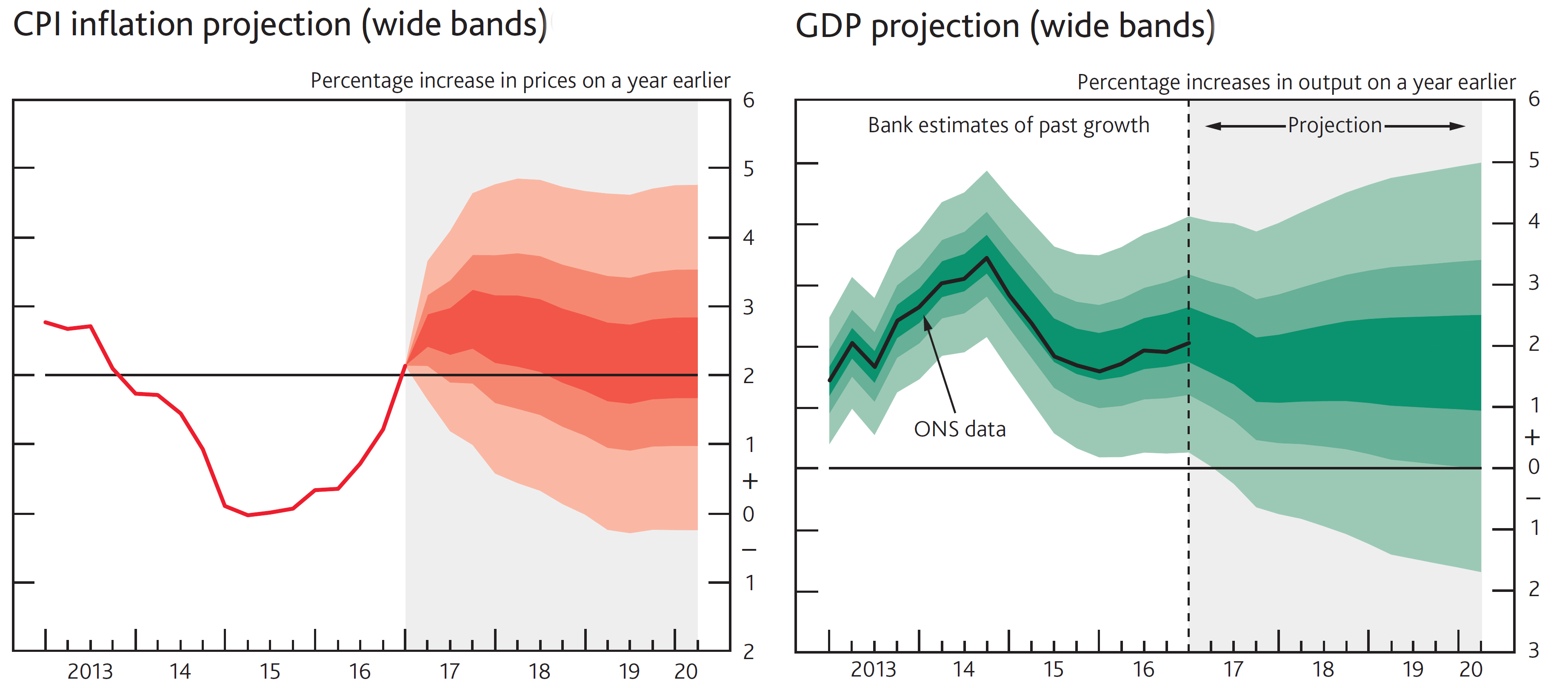
The charts and tables showing the May 2017 projections have been conditioned on the assumptions that the stock of purchased gilts remains at £435 billion and the stock of purchased corporate bonds remains at £10 billion throughout the forecast period, and on the Term Funding Scheme (TFS); all three of which are financed by the issuance of central bank reserves. They have also been conditioned on market interest rates, unless otherwise stated.
The wider the fan, the greater the degree of uncertainty. These fan charts are wide by historical standards, reflecting the particularly uncertain future for the UK economy.
But one thing is clear from the latest data: real incomes are falling. This is likely to dampen consumer spending, but just how much this will impact on aggregate demand over the coming months remains to be seen.
Articles
UK real wages drop for first time in three years Financial Times, Sarah O’Connor (17/5/17)
Bank of England warns Brexit vote will damage living standards The Guardian, Katie Allen (11/5/17)
UK wage growth lags inflation for first time since mid-2014 BBC News (17/5/17)
Britons’ Falling Real Wages Show Challenging Times Have Arrived Bloomberg, Scott Hamilton and Lucy Meakin (17/5/17)
Jobs market will suffer a Brexit slowdown, say experts The Guardian, Angela Monaghan and Phillip Inman (15/5/17)
Pay will continue to be squeezed, employers’ survey suggests BBC News, Kamal Ahmed (15/5/17)
Brexit latest: Real wages falling, Office for National Statistics reveals Independent, Ben Chu (17/5/17)
UK inflation climbs to four-year high, beating forecasts Financial Times, Gavin Jackson (16/5/17)
Why is UK inflation at a four-year high? Financial Times, Gavin Jackson (19/5/17)
A blip, or a test of hawks’ patience? Economists respond to high UK inflation data Financial Times, Nicholas Megaw (16/5/17)
UK inflation rate at highest level since September 2013 BBC News (16/5/17)
Inflation jumps to its highest level since 2013 as Brexit continues to bite Business Insider, Will Martin (16/5/17)
UK GDP growth weaker than expected as inflation hits spending The Guardian, Katie Allen (25/5/17)
UK economic growth estimate revised down BBC News (25/5/17)
Reports
Inflation Report, May 2017 Bank of England (11/5/17)
Labour Market Outlook, Sping 2017 Chartered Institute of Personnel and Development (May 2017)
Data
Statistical Interactive Database – interest & exchange rates data Bank of England
Inflation and price indices ONS
Earnings and working hours ONS
Second estimate of GDP: Jan to Mar 2017 ONS Statistical Bulletin (25/5/17)
Questions
- Find out what has happened to the dollar/sterling and the euro/sterling exchange rate and the sterling exchange rate index over the past 24 months. Plot the data on a graph.
- Explain the changes in these exchange rates.
- Why is there negative real wage growth in the UK when the rate of unemployment is the lowest it’s been for more than 40 years?
- Find out what proportion of aggregate demand is accounted for by household consumption. Why is this significant in understanding the likely drivers of economic growth over the coming months?
- Why is uncertainty over future UK growth rates relatively high at present?
- Why is inflation likely to peak later this year and then fall?
- What determines the size and shape of the fan in a fan chart?
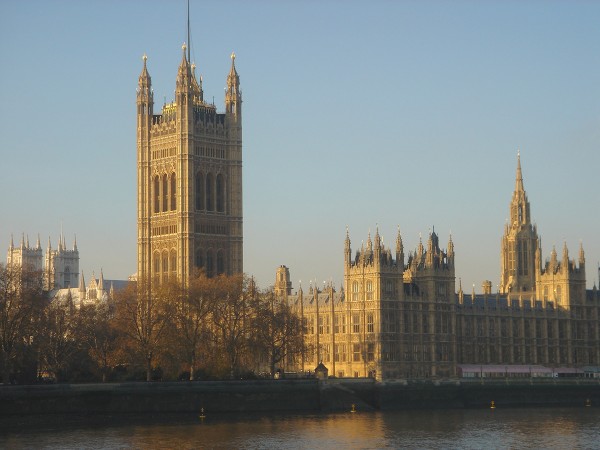 According to the theory of the political business cycle, governments call elections at the point in the business cycle that gives them the greatest likelihood of winning. This is normally near the peak of the cycle, when the economic news is currently good but likely to get worse in the medium term. With fixed-term governments, this makes it harder for governments as, unless they are lucky, they have to use demand management policies to engineer a boom as an election approaches. It is much easier if they can choose when to call an election.
According to the theory of the political business cycle, governments call elections at the point in the business cycle that gives them the greatest likelihood of winning. This is normally near the peak of the cycle, when the economic news is currently good but likely to get worse in the medium term. With fixed-term governments, this makes it harder for governments as, unless they are lucky, they have to use demand management policies to engineer a boom as an election approaches. It is much easier if they can choose when to call an election.
In the UK, under the Fixed-term Parliaments Act of 2011, the next election must be five years after the previous one. This means that the next election in the UK must be the first Thursday in May 2020. The only exception is if at least two-thirds of all MPs vote for a motion ‘That there shall be an early parliamentary general election’ or ‘That this House has no confidence in Her Majesty’s Government.’
The former motion was put in the House of Commons on 19 April and was carried by 522 votes to 13 – considerably more than two-thirds of the 650 seats in Parliament. The next election will therefore take place on the government’s chosen date of 8 June 2017.
Part of the reason for the government calling an election is to give it a stronger mandate for its Brexit negotiations. Part is to take advantage of its currently strong opinion poll ratings, which, if correct, will mean that it will gain a substantially larger majority. But part could be to take advantage of the current state of the business cycle.
Although the economy is currently growing quite strongly (1.9% in 2016) and although forecasts for economic growth this year are around 2%, buoyed partly by a strongly growing world economy, beyond that things look less good. Indeed, there are a number of headwinds facing the economy.
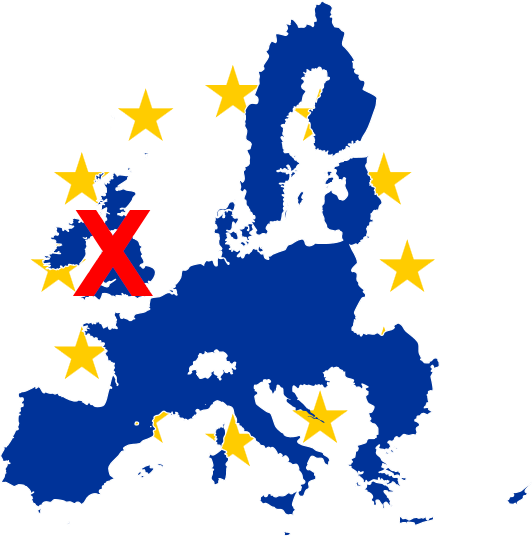 First there are the Brexit negotiations, which are likely to prove long and difficult and could damage confidence in the economy. There may be adverse effects on both inward and domestic investment and possible increased capital outflows. At the press conference to the Bank of England’s February 2017 Inflation Report, the governor stated that “investment is expected to be around a quarter lower in three years’ time than projected prior to the referendum, with material consequences for productivity, wages and incomes”.
First there are the Brexit negotiations, which are likely to prove long and difficult and could damage confidence in the economy. There may be adverse effects on both inward and domestic investment and possible increased capital outflows. At the press conference to the Bank of England’s February 2017 Inflation Report, the governor stated that “investment is expected to be around a quarter lower in three years’ time than projected prior to the referendum, with material consequences for productivity, wages and incomes”.
Second, the fall in the sterling exchange rate is putting upward pressure on inflation. The Bank of England forecasts that CPI inflation will peak at around 2.8% in early 2018. With nominal real wages lagging behind prices, real wages are falling and will continue to do so. As well as from putting downward pressure on living standards, it will tend to reduce consumption and the rate of economic growth.
 Consumer debt has been rising rapidly in recent months, with credit-card debt reaching an 11-year high in February. This has helped to support growth. However, with falling real incomes, a lack of confidence may encourage people to cut back on new borrowing and hence on spending. What is more, concerns about the unsustainability of some consumer debt has encouraged the FCA (the financial sector regulator) to review the whole consumer credit industry. In addition, many banks are tightening up on their criteria for granting credit.
Consumer debt has been rising rapidly in recent months, with credit-card debt reaching an 11-year high in February. This has helped to support growth. However, with falling real incomes, a lack of confidence may encourage people to cut back on new borrowing and hence on spending. What is more, concerns about the unsustainability of some consumer debt has encouraged the FCA (the financial sector regulator) to review the whole consumer credit industry. In addition, many banks are tightening up on their criteria for granting credit.
Retail spending, although rising in February itself, fell in the three months to February – the largest fall for nearly seven years. Such falls are likely to continue.
So if the current boom in the economy will soon end, then, according to political business cycle theory, the government is right to have called a snap election.
Articles
Gloomy economic outlook is why Theresa May was forced to call a snap election The Conversation, Richard Murphy (18/4/17)
What does Theresa May’s general election U-turn mean for the economy? Independent, Ben Chu (18/4/17)
It’s not the economy, stupid – is it? BBC News Scotland, Douglas Fraser (18/4/17)
Biggest fall in UK retail sales in seven years BBC News (21/4/17)
Sharp drop in UK retail sales blamed on higher prices Financial Times, Gavin Jackson (21/4/17)
Shoppers cut back as inflation kicks in – and top Bank of England official says it will get worse The Telegraph, Tim Wallace Szu Ping Chan (21/4/17)
Retail sales volumes fall at fastest quarterly rate in seven years Independent, Ben Chu (21/4/17)
Statistical Bulletin
Retail sales in Great Britain: Mar 2017 ONS (21/4/17)
Questions
- For what reasons might economic growth in the UK slow over the next two to three years?
- For what reasons might economic growth increase over the next two to three years?
- Why is forecasting UK economic growth particularly difficult at the present time?
- What does political business cycle theory predict about the behaviour of governments (a) with fixed terms between elections; (b) if they can choose when to call an election?
- How well timed is the government’s decision to call an election?
- If retail sales are falling, what other element(s) of aggregate demand may support economic growth in the coming months?
- How does UK productivity compare with that in other developed countries? Explain why.
- What possible trading arrangements with the EU could the UK have in a post-Brexit deal? Discuss their likelihood and their impact on economic growth?
 Growth in the eurozone has slowed. The European Central Bank (ECB) now expects it to be 1.1% this year; in December, it had forecast a rate of 1.7% for 2019. Mario Draghi, president of the ECB, in his press conference, said that ‘the weakening in economic data points to a sizeable moderation in the pace of the economic expansion that will extend into the current year’. Faced with a slowing eurozone economy, the ECB has announced further measures to stimulate economic growth.
Growth in the eurozone has slowed. The European Central Bank (ECB) now expects it to be 1.1% this year; in December, it had forecast a rate of 1.7% for 2019. Mario Draghi, president of the ECB, in his press conference, said that ‘the weakening in economic data points to a sizeable moderation in the pace of the economic expansion that will extend into the current year’. Faced with a slowing eurozone economy, the ECB has announced further measures to stimulate economic growth. Second, although quantitative easing (the asset purchase programme) is coming to an end, there will be no ‘quantitative tightening’. Instead, the ECB will purchase additional assets to replace any assets that mature, thereby leaving the stock of assets held the same. This would continue ‘for an extended period of time past the date when we start raising the key ECB interest rates, and in any case for as long as necessary to maintain favourable liquidity conditions and an ample degree of monetary accommodation’.
Second, although quantitative easing (the asset purchase programme) is coming to an end, there will be no ‘quantitative tightening’. Instead, the ECB will purchase additional assets to replace any assets that mature, thereby leaving the stock of assets held the same. This would continue ‘for an extended period of time past the date when we start raising the key ECB interest rates, and in any case for as long as necessary to maintain favourable liquidity conditions and an ample degree of monetary accommodation’. ECB launches new series of targeted longer-term refinancing operations
ECB launches new series of targeted longer-term refinancing operations  ECB’s decision to launch fresh loans not that dovish, economist says
ECB’s decision to launch fresh loans not that dovish, economist says ECB Press Conference, webcast
ECB Press Conference, webcast The last two weeks have been quite busy for macroeconomists, HM Treasury staff and statisticians in the UK. The Chancellor of the Exchequer, Mr Phillip Hammond, delivered his (fairly upbeat) Spring Budget Statement on 13 March, highlighting among other things the ‘stellar performance’ of UK labour markets. According to a
The last two weeks have been quite busy for macroeconomists, HM Treasury staff and statisticians in the UK. The Chancellor of the Exchequer, Mr Phillip Hammond, delivered his (fairly upbeat) Spring Budget Statement on 13 March, highlighting among other things the ‘stellar performance’ of UK labour markets. According to a 






